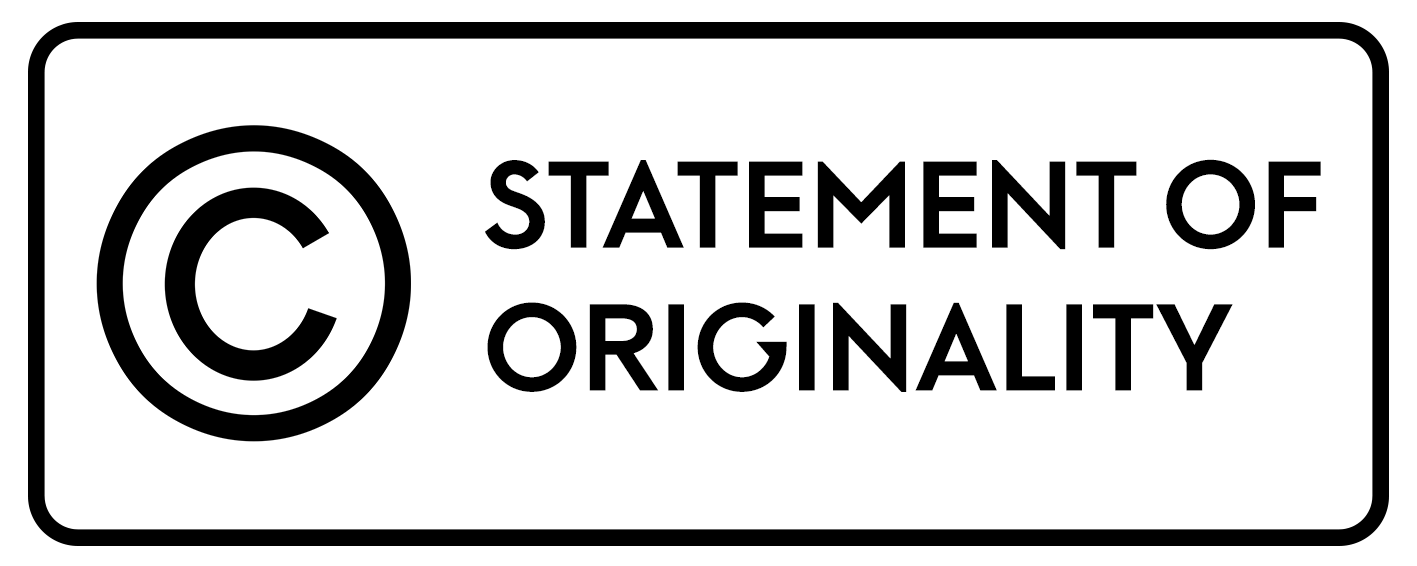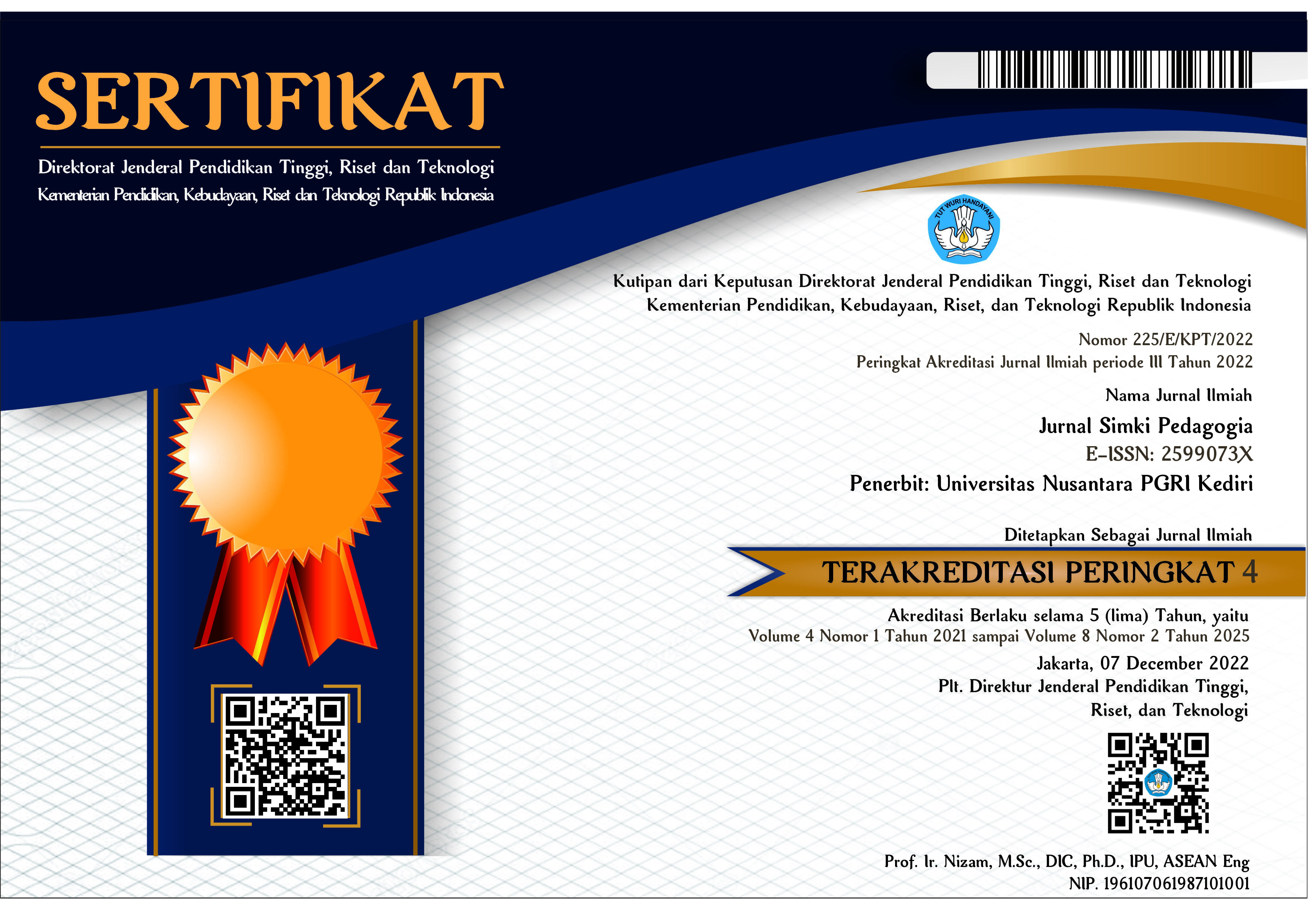Peningkatan Hasil Belajar PPKn Materi Perumusan dan Penetapan Pancasila sebagai Dasar Negara melalui Model Pembelajaran Discovery Learning di SMPN 3 Trenggalek
 Abstract views: 260
,
Abstract views: 260
,
 PDF (Bahasa Indonesia) downloads: 582
PDF (Bahasa Indonesia) downloads: 582
Abstract
From the observations of researchers as PPKn teachers in class VII, it was found that student learning outcomes were very low. Many students do not complete the PPKn learning. The cause of the problem is that Civics learning is boring because the material is difficult to understand and teachers still often use conventional learning methods and models. This problem also occurs in class VII C where the researcher teaches in it. The purpose of the implementation of this classroom action research is to find out the improvement of Civics learning outcomes in the formulation and determination of Pancasila as the basis of the state through discovery learning learning models in class VII C students in semester 1 of the 2017/2018 academic year at SMPN 3 Trenggalek. The subjects in this classroom action research were class VII C students of SMP Negeri 3 Trenggalek. This research design consists of planning, action, observation and reflection stages. From the results of the implementation of Civics learning starting from the pre-cycle to the implementation of the research cycle I and cycle II, it can be concluded that the application of the discovery learning learning model can improve the Civics learning outcomes for grade VII C students of SMP Negeri 3 Trenggalek Semester 1 of 2017/2018. This can be seen from the increase in the percentage of student learning completeness, namely in the first cycle of 73.33% and in the second cycle it increases again until it reaches 100% (all students complete).
Downloads
References
Aqib, Z., & Amrullah, A. (2018). PTK Penelitian Tindakan Kelas Teori dan Aplikasinya. Ptk Penelitian Tindakan Kelas Teori Dan Aplikasinya.
Arikunto, S. (2002). Metodologi Penelitian Suatu Pendekatan Proposal. 2017.
Bruner, J. (1971). The relevance of education. In The relevance of education.
Dahar, R. W. (2012). Teori-teori belajar & pembelajaran / Ratna Wilis Dahar. Teori-Teori Belajar & Pembelajaran .
Depdiknas. (2004). Kurikulum 2004 Standar Kompetensi Mata Pelajaran Matematika Sekolah Menengah Pertama dan Madrasah Tsanawiyah. Jakarta: Depdiknas.
Kemendikbud. (2013). Kerangka Dasar Kurikulum 2013. Jakarta: Kementerian Pendidikan dan Kebudayaan Direktorat Jenderal Pendidikan Dasar.
Mawaddah, S., & Maryanti, R. (2016). Kemampuan Pemahaman Konsep Matematis Siswa SMP dalam Pembelajaran Menggunakan Model Penemuan Terbimbing (Discovery Learning). EDU-MAT: Jurnal Pendidikan Matematika, 4(1). https://doi.org/10.20527/edumat.v4i1.2292
Permana, E. P. (2018). Efektifitas Model Creative Problem Solving Dengan Media Teka-Teki Silang Daun Terhadap Aktivitas dan Hasil Belajar IPA Sekolah Dasar. JRPD (Jurnal Riset Pendidikan Dasar), 1(2). https://doi.org/10.26618/jrpd.v1i2.1441
Sudirman. (2007). Pengertian Motivasi Menurut Para Ahli. In Dosen Pendidikan.
Sugiono. (2016). Metode Pendekatan Kuantitatif, kualitatif dan R&D. In Bandung: Alfabeta.
Sugiyono. (2015). Metode Penelitian dan Pengembangan Pendekatan Kualitatif, Kuantitatif, dan R&D. In Metode Penelitian dan Pengembangan Pendekatan Kualitatif, Kuantitatif, dan R&D.
Copyright (c) 2020 Tavi Astuti Sumadyani

This work is licensed under a Creative Commons Attribution 4.0 International License.

Jurnal Simki Pedagogia : https://jiped.org/index.php/JSP/index is licensed under a Creative Commons Attribution 4.0 International License.
















